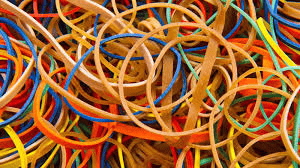The basic question about the properties of rubber is: What makes it so flexible? Rubber is a complex material made of long chains of polymeric molecules, joined together into a network structure. Because of this structure, rubber is elastic and deformable, but it retains its solid-like characteristics as well. In fact, rubber is capable of being stretched up to 10 times its original length without losing its shape. The following are some examples of the properties of rubber.

The material is non-toxic and heat-resistant. It is also water and acid-resistant. Rubber is also a good electrical insulator. It is versatile enough to be used as an adhesive, coating composition, fibre and moulding compound. Due to its plasticity and elasticity, rubber can be modified using a number of techniques, including chemical and heat treatment. For example, synthetic rubber has superior resistance to oil, gasoline, and certain chemicals, while natural rubber is more resistant to heat. When you need UK Rubber Moulding services, go to https://www.meadex.co.uk/rubber-moulding
While most rubber used in everyday life is vulcanised, a small amount of natural rubber is still made. Both types of rubber have similar properties, but one degrades with heat, while the other remains stable. The polymer, modifiers, and fillers used to create rubber also play an important role in determining its properties. The latter, known as “vulcanisation,” involves heating rubber with sulphur in a pressure cooker, while steam curing is a process in which a mixture of water and chemicals is applied to the raw material.
Another type of synthetic rubber is called neoprene. This type of rubber is best known for its low sensitivity to fire and corrosion, which make it an excellent base material for a variety of chemical and corrosion-resistant coatings. Other properties of neoprene include tensile and elongation strength. Although it lacks ozone, UV, and heat resistance, it is ideal for many applications.

Natural rubber is produced by trees in India and other tropical regions. It contains 30 to 40% rubber and small amounts of proteins. This material oozes from the cut of a rubber tree and is collected in a container. Plantations of rubber trees can continue to yield latex for up to 40 years. Each year, the trees can yield from 1.5 to three kilograms of rubber. They can even be grown in smallholder plantations.
The electrical strength of rubber depends on the voltage applied and the degree of stretching. In a test that uses 50 Hz electric power, the electrical strength of rubber is dependent upon the amount of strain applied and the time that the test is conducted.
